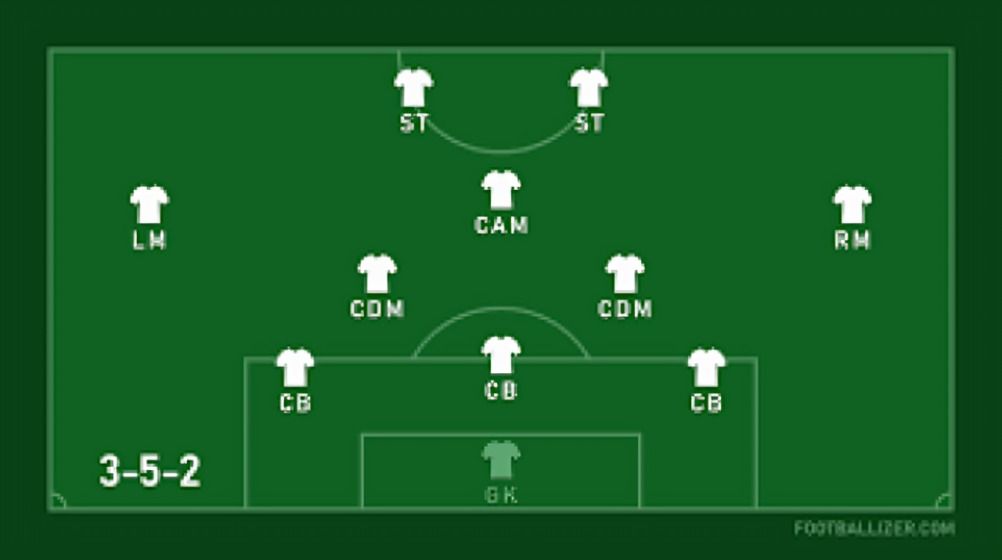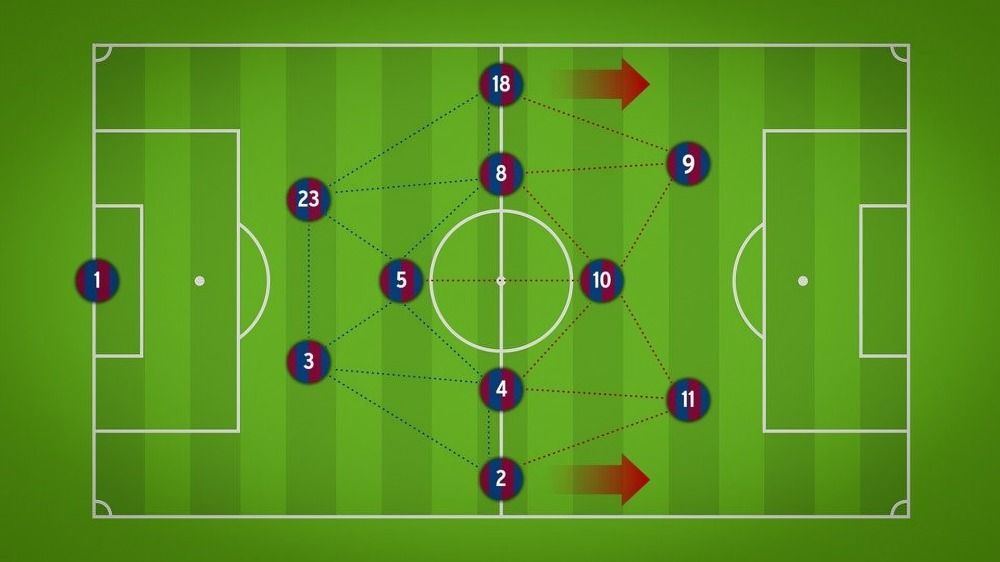
Football tactics and formations have been a cornerstone of the sport since its earliest days. From the classic 4-4-2 to innovative formations like the 3-5-2, tactics have evolved dramatically, shaping how teams play and adapt to opponents. This article explores 20 fascinating facts about football tactics and formations. Whether it’s understanding the defensive solidity of a back five or the attacking freedom of a 4-3-3, these tactical insights give you a deeper look at how football has developed over time. 1
Tactics emphasize the importance of strategic planning in football. They connect a team's formation to a specific playing style, whether attacking, counterattacking, fast or slow tempo, or short and long passing.2
Football requires skilled players, but talent alone isn't enough. Tactics like VERROU and WM have evolved to gain an edge over opponents. Today, methods such as Gegenpressing, famously used by Liverpool, exemplify effective modern tactics. 3

The first known tactical formation, the 2-3-5, emerged in the late 19th century, emphasizing offensive play. This setup allowed teams to dominate the field with a strong forward presence, but it eventually gave way to more balanced formations.
Developed by Herbert Chapman in the 1920s, the WM formation (3-2-2-3) was revolutionary. It balanced defence and attack, allowing teams to adapt to the evolving nature of the game, particularly in response to the offside rule changes. 4
The 4-4-2 flat formation consists of a four-person backline with two central and two wide defenders. The midfield features two central players and two wingers, creating a balanced unit. Up front, two central strikers lead the attack. 5
Total Football, pioneered by Rinus Michels, involves expanding the field when in possession and narrowing it when defending. This approach prevents opponents from dominating the space and emphasizes pressure to intimidate and score. 6
Controlling and passing the ball with the feet is football's fundamental skill, with heading used mainly for long aerial passes. Players often showcase their abilities through "solo runs," dribbling past opponents. 7

Tiki-Taka, developed by Johan Cruyff, a student of Rinus Michels, is similar to Total Football. It relies on constant passing to demoralize and confuse opponents, making scoring easier. It's also rooted in the 4-3-3 formation for effective ball control and attack.
The Kick and Rush tactic, originating in British football, focuses on long diagonal passes rather than specific formations. This direct approach aims to confuse opponents and create quick scoring opportunities. 8
The Body Crash tactic emphasizes physical strength over numbers or talent, emphasizing fitness and muscle. Teams with high physical endurance, particularly from Scandinavian countries like Denmark, Sweden, and Norway. 9
Joga Bonito, meaning "Nice Game" in Portuguese, is a tactic emphasizing talent, ankle control, and ball mastery. Iconic players like Ronaldinho, Ronaldo, and Roberto Carlos exemplify this style and are known for their flair and creativity. 10

The Parking Bus tactic involves positioning all players in defence, focusing solely on preventing goals rather than scoring. Though often seen as boring by fans, José Mourinho used it effectively, leading Chelsea to many successes with this strategy.
Gegenpressing, one of the most admired tactics in recent years, focuses on defending through intense offence. It aims to win the ball and score by pressing with 5-6 players when the opponent has possession. 11
The 1-2-7 formation, used until 1866, relied on sideways or backward passes, as forward passes were prohibited. Players moved in a line, focusing on attacking dribbles with minimal defensive duties. 12
In zonal marking, defenders cover specific areas of the pitch rather than marking individual players. This strategy helps maintain a defensive shape and effectively neutralize opposing threats during set pieces. 13
Many teams dedicate significant time to set-piece tactics, including corners and free kicks. Unique routines can create mismatches and scoring opportunities, emphasizing the importance of preparation in modern football. 14
This tactic involves two central midfielders providing defensive cover while facilitating transitions between defence and attack. It's a common feature in modern formations, offering balance and tactical versatility. 15
Modern football often features fluid formations that can change during play. Teams like Ajax employ this strategy, allowing players to interchange positions seamlessly, confusing opponents and creating dynamic attacking threats. 16
Successful teams adapt their tactics based on opponents and match situations. This flexibility allows for adjustments in formations and strategies, showcasing the importance of tactical intelligence in modern football. 17